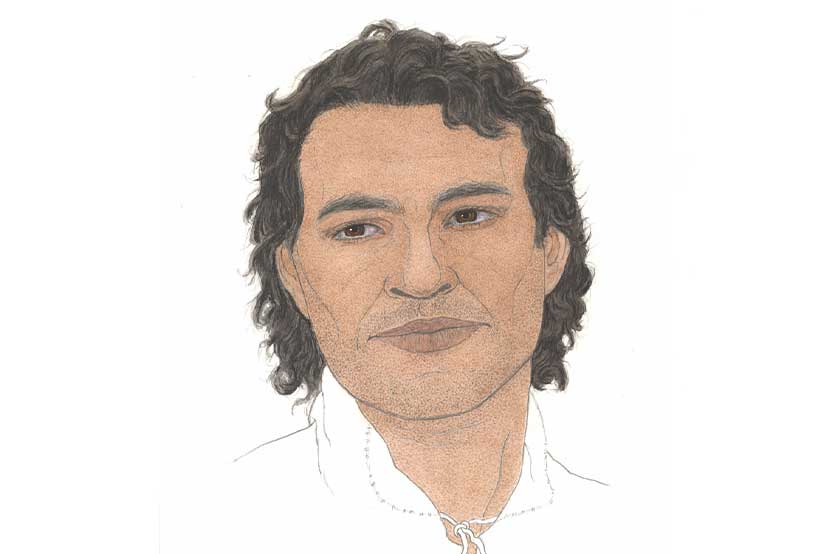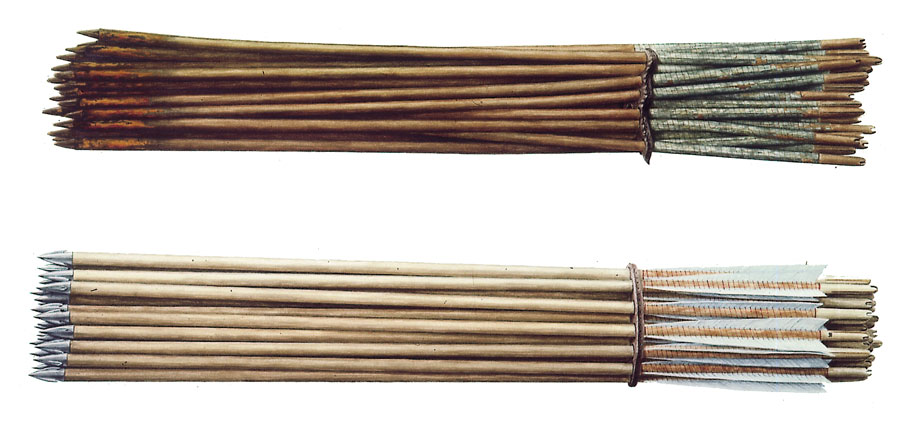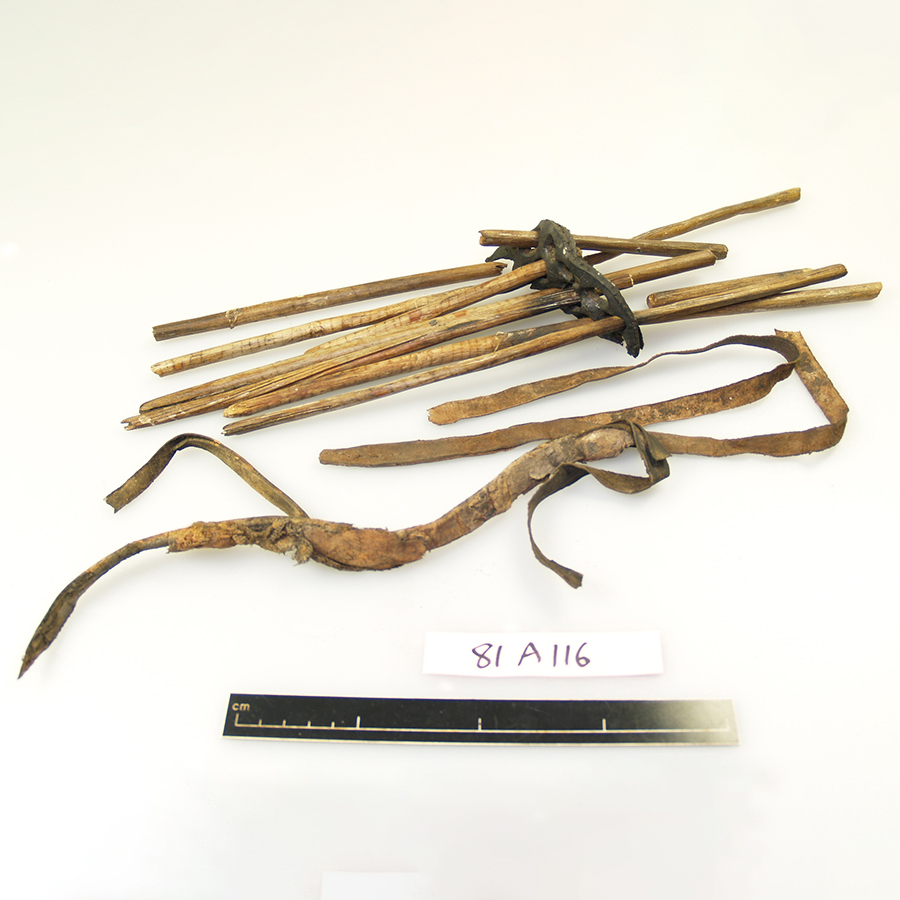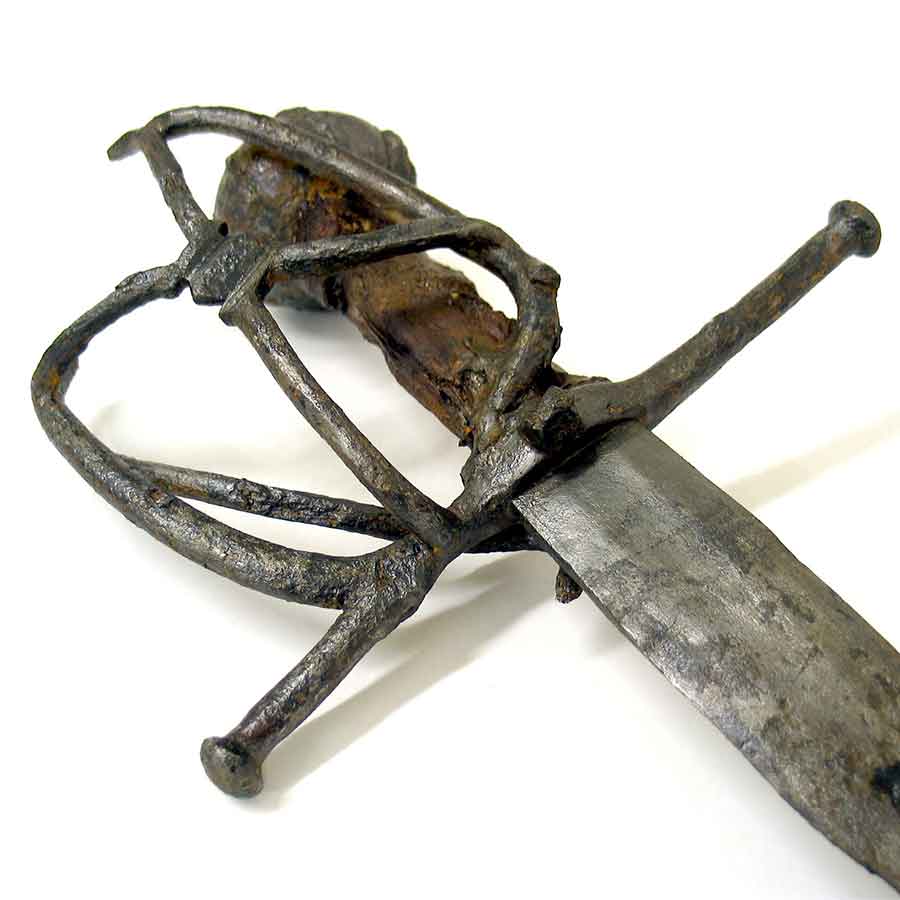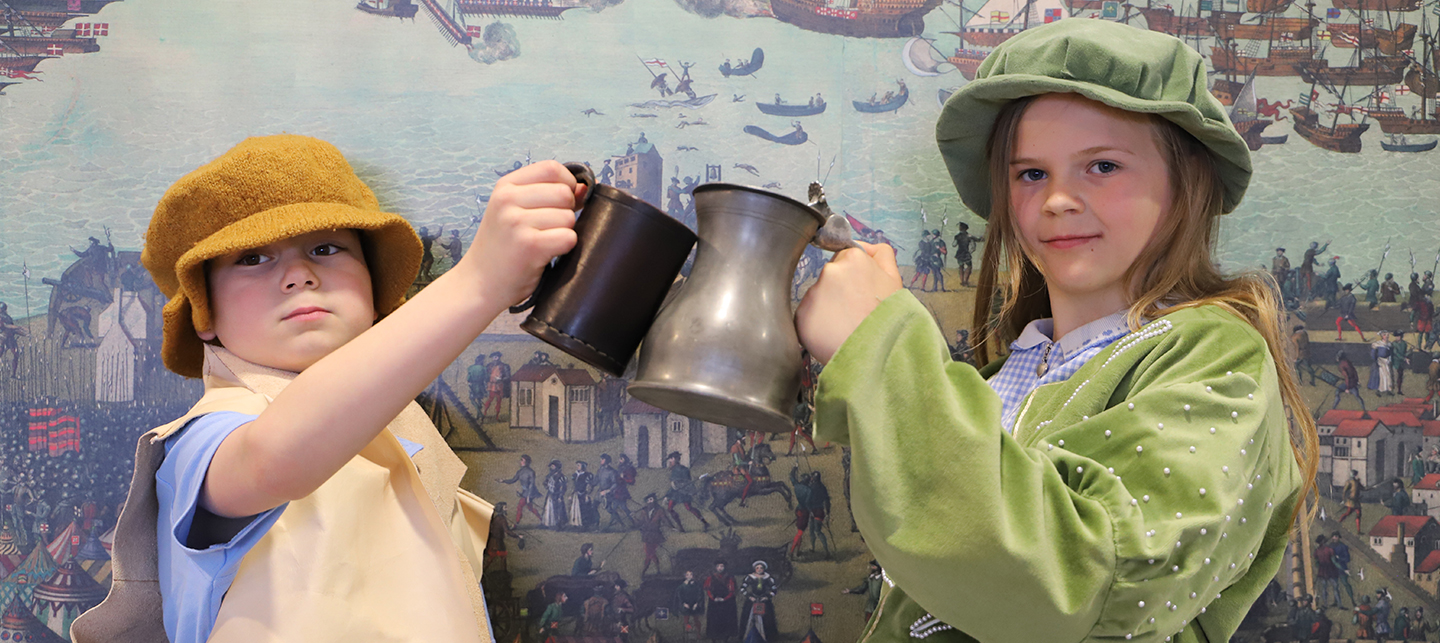Who was he?
A man was found on the main deck in the middle of the ship, his broken longbow was beside him, and a leather wristguard with Henry VIII’s and Katherine of Aragon’s badges lay over his lower arm. We think he may have been a Royal Archer.
In his early 20s at 1.79m (5ft 10in), he was taller than most. He was well built, with particularly strong legs. The centre of his spine was twisted, a feature commonly found in archers. Grooves on his right finger bones may be the result of repeatedly drawing a longbow.
Analysis of his teeth indicates he was raised in a hot climate, warmer than those in England, some distance from the sea. We think he may have grown up in North Africa.
He carried a sword in a decorated scabbard. Extensive silk edging found with him may have decorated a uniform.
